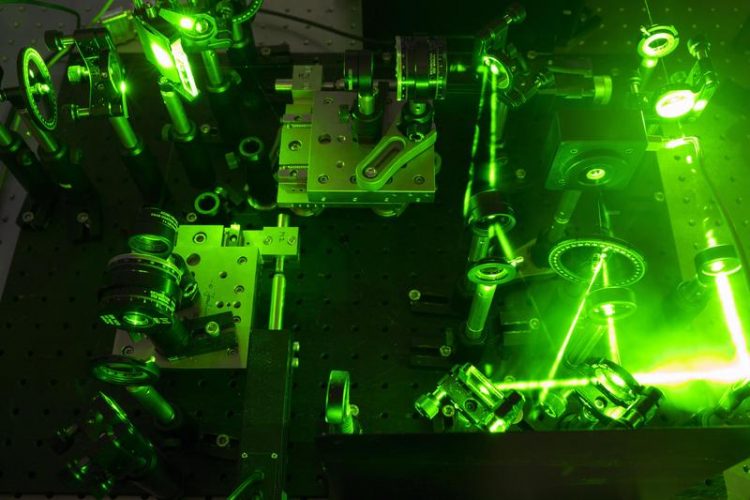Jena Laser Technology Conference brings together top international researchers

At ESULaB 2019, top researchers discuss the latest developments in the field of spectroscopy and imaging with ultrafast lasers. Sven Döring / Leibniz-IPHT
“With the help of biophotonics, it is possible, for example, to better understand the causes of diseases so that they can be prevented in the future or at least diagnosed earlier and more precisely and thus treated more effectively“, says conference chair Prof. Jürgen Popp, scientific director of the Leibniz Institute of Photonic Technology (Leibniz IPHT) in Jena, which is hosting the conference.
Scientists in the relatively new research area of biophotonics are combining life sciences, environmental sciences and medicine with innovative optical technologies.
“In order to advance biophotonic research, we have to further develop optical and spectroscopic methods,” adds Dr. Peter Vogt, Director Field Sales Europe Scientific of Coherent Europe BV. Being one of the world's leading laser manufacturers Coherent co-organises the conference. “This requires new light sources, optical components and detectors, for example.
Scientists made progress in the development of intensive, ultra-short pulsed laser sources by exploiting new, non-linear optical phenomena and thus promoting developments in biophotonics. Multiphoton microscopy, for example, is now an integral part of modern biomedical research.
At ESULaB 2019, high-ranking scientists from various disciplines in Germany, Europe and the US will present their research. The spectrum of topics includes nonlinear imaging for biomedical diagnostics (e.g. SHG/THG microscopy, coherent Raman microscopy) as well as imaging of biological objects with highest spatial resolution.
Stefan Hell, Director of the Max Planck Institute for Biophysical Chemistry in Göttingen, will speak on this topic. With his microscopy method “STED” (Stimulated Emission Depletion), he levered out the resolution limit of optical microscopy and was awarded the Nobel Prize for Chemistry in 2014.
Today, he is developing new microscopes with which living cells can be observed live. Further topics of ESULaB 2019 are the ultra-short time spectroscopy of biological systems – such as protein folding dynamics using 2D spectroscopy – and wavelengths in the EUV/X-ray range.
An industrial forum offers researchers and industry representatives the opportunity to exchange ideas. Participation in the conference is free of charge.
Registration at: www.esulab.org
Media Contact
More Information:
http://www.leibniz-ipht.deAll latest news from the category: Event News
Newest articles

You are What You Eat—Stanford Study Links Fiber to Anti-Cancer Gene Modulation
The Fiber Gap: A Growing Concern in American Diets Fiber is well known to be an important part of a healthy diet, yet less than 10% of Americans eat the minimum recommended…

Trust Your Gut—RNA-Protein Discovery for Better Immunity
HIRI researchers uncover control mechanisms of polysaccharide utilization in Bacteroides thetaiotaomicron. Researchers at the Helmholtz Institute for RNA-based Infection Research (HIRI) and the Julius-Maximilians-Universität (JMU) in Würzburg have identified a…

ASXL1 Mutation: The Hidden Trigger Behind Blood Cancers and Inflammation
Scientists show how a mutated gene harms red and white blood cells. LA JOLLA, CA—Scientists at La Jolla Institute for Immunology (LJI) have discovered how a mutated gene kicks off…



